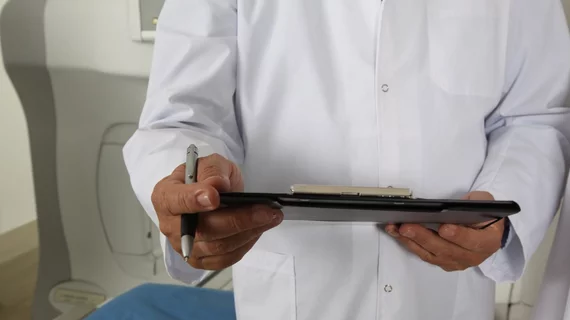Pre-TAVR pulmonary artery dilatation helps identify high-risk patients
Using CT scans to look for signs of pulmonary artery dilatation (PAD) before patients undergo transcatheter aortic valve replacement (TAVR) can provide significant value, according to new findings published in JACC: Cardiovascular Interventions.
Right heart catheterization (RHC) is the “gold standard” for evaluating a patient’s risk of pulmonary hypertension (PH), the authors explained, but it is also invasive. Could PAD work as a noninvasive alternative to RHC?
“Enlargement of pulmonary artery diameter is one of the characteristics of PH,” wrote first author Keita Koseki, MD, of Cedars-Sinai Medical Center in Los Angeles, and colleagues. “Although CT–derived PAD is often observed before TAVR, the clinical impact of CT-derived PAD remains unclear.”
The team explored data from 895 patients who were treated at the same U.S. facility from November 2013 to December 2017. While the mean patient age was 81.3 years old, the mean Society of Thoracic Surgeons (STC) score was 4.8%.
For the sake of this analysis, PAD was defined as a pulmonary artery diameter of 29 mm or more. PAD was seen in 41.2% of patients.
Overall, the authors wrote, PAD was associated with higher STC scores as well as higher rates of atrial fibrillation, chronic kidney disease and chronic obstructive pulmonary disease. Two-year mortality was also more than twice as high among PAD patients (28.9%) than it was among patients in the no-PAD group (12.8%).
“PH is common in patients with aortic stenosis, and those with concomitant PH have worse outcomes than those without PH,” the authors wrote. “Most studies have evaluated PA pressure measured using RHC or transthoracic echocardiography; however, few studies have evaluated PAD, which is an anatomical change caused by PH.”
The team also described PAD as a “simple parameter suitable for routine evaluation before TAVR” that could help clinicians make key decisions related to treatment strategies.
“There is a need for larger studies that include comparisons with RHC data to confirm our findings,” they concluded.
The full study can be read here.

